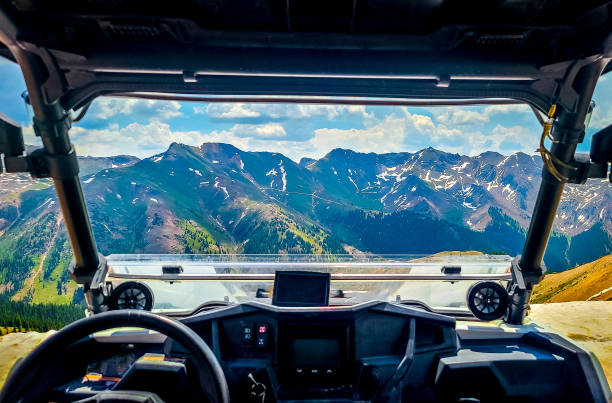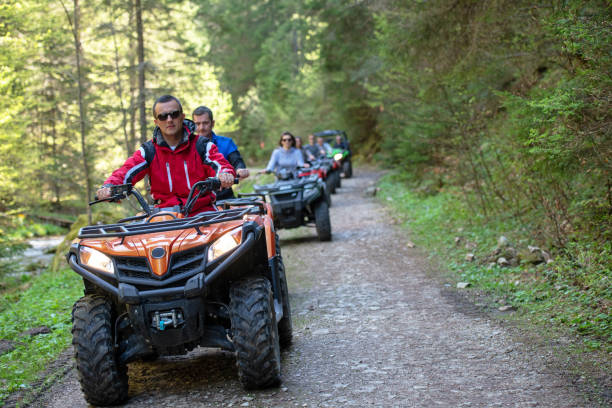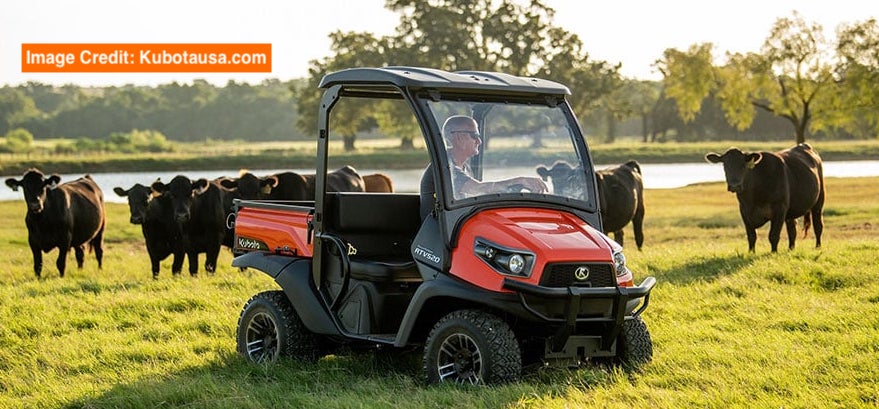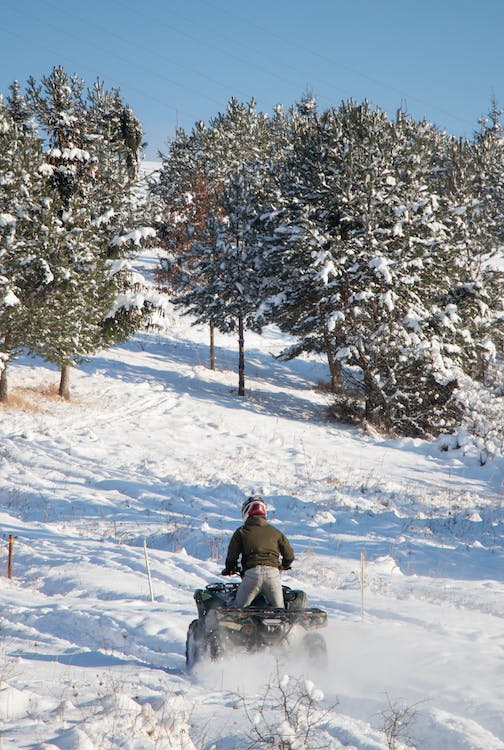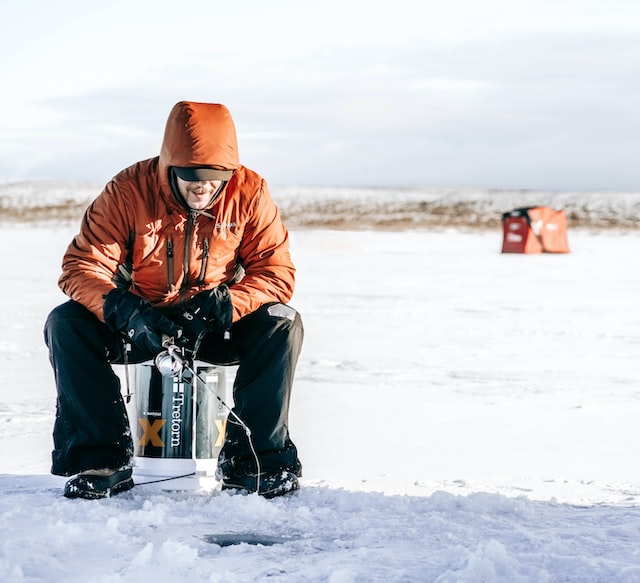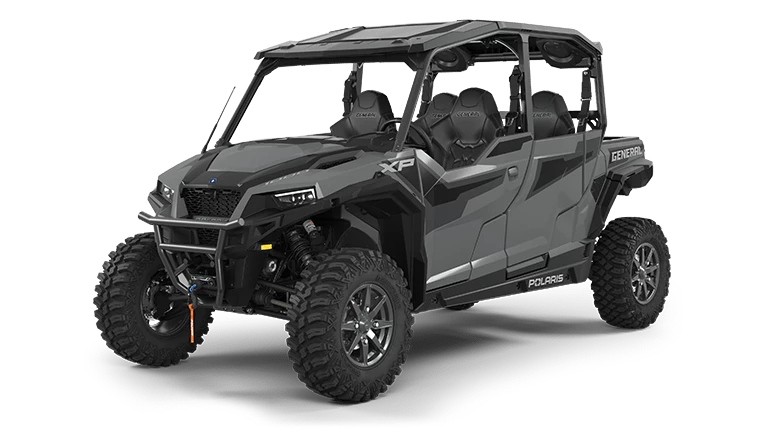As an Amazon Associate I may earn a commission from qualifying purchases at no additional cost to you.
Selecting the right off-road vehicle for a family can be a challenging decision.
For individuals focused on providing a safe and engaging outdoor experience for young riders, youth ATV models present an excellent choice. These vehicles emphasize safety features and age-appropriate controls, making them ideal for introducing youngsters to off-road adventures.

In contrast, family-friendly Side by Sides offer an opportunity for shared experiences, accommodating multiple passengers with ease. They are designed with both comfort and utility in mind, allowing families to explore the great outdoors together. Equipped with features like roll cages and comfortable seating, these models enhance safety and comfort for all occupants.
Choosing between youth ATVs and Side by Sides ultimately depends on the desired function and family dynamics. Each option brings unique benefits, catering to different preferences for outdoor exploration and bonding. Understanding these distinctions is crucial for making an informed decision.
Understanding ATVs and Side-by-Side Vehicles
Off-road vehicles, particularly ATVs and Side-by-Side options, cater to diverse recreational and work needs. The choice largely depends on the intended use, whether for solo adventures or family outings.
Defining ATVs and UTVs
All-Terrain Vehicles (ATVs), also known as four-wheelers, are popular for their agility. Designed for a single rider, they offer quick maneuvers and adaptability in varied terrains. They are compact, often featuring handlebars for steering and a straddle seating position.
Utility Terrain Vehicles (UTVs), also called Side-by-Side vehicles (SxS), differ significantly. These are engineered for multiple passengers, typically with seating arrangements similar to a car. They offer more storage and come with a protective roll cage. This makes them favorable for family trips and utility tasks.
ATVs vs SxS/UTV: Purpose and Use
The primary distinction between ATVs and SxS/UTVs lies in their use and capacity. ATVs are typically chosen for solo adventures or tasks that require quick mobility on rugged paths. Their lighter build allows for easy navigation in tight spaces.
In contrast, UTVs provide comfort and safety for multiple occupants. They are ideal for family-friendly excursions or work-related tasks due to their larger capacity and better stability. UTVs often come with extra features like windshields and roofs, enhancing the off-road experience in all-weather conditions. The choice between the two depends on whether the focus is individual or group use, adventure or practicality.
Factors to Consider for Youth ATV Models
When selecting a youth ATV, safety, engine size, and handling are critical components. Balancing these factors ensures that young riders have a fun and secure experience. Parental controls and age recommendations are key considerations that help to maintain safety and offer peace of mind for families.
Safety Features for Young Riders
Safety is paramount when it comes to youth ATVs, and modern models often come equipped with essential features. Parental controls allow adults to set limits on speed and power, ensuring that young riders remain within safe operating conditions.
Many models feature a throttle limiter to limit acceleration, preventing inexperienced riders from going too fast. Additionally, riders should wear protective safety gear, including helmets and pads, which can significantly reduce injury risks.
When reviewing options, parents should prioritize models with automatic shut-off switches and LED lighting for enhanced visibility. Age-specific recommendations also guide the selection process, ensuring the ATV is suitable for the rider’s age and experience level.
Engine Size and Power for Youth ATVs
The engine size of a youth ATV plays a crucial role in performance and safety. Smaller engines, typically ranging from 50cc to 125cc, are recommended for younger or beginner riders. These engines provide enough power to learn basic handling skills without overwhelming young riders.
Consideration should also be given to the weight and power combination, as the right balance can improve control and increase safety. Many entry-level ATVs offer electronic speed limiters that parents can adjust as the child’s skills develop.
Evaluating the manufacturer’s age and experience recommendations can aid in selecting an appropriate engine size, ensuring a match between the rider’s capabilities and the ATV’s power.
Handling and Stability for Youth Models
Handling and stability are vital for a youth rider’s confidence and safety. ATVs designed for young users should feature a low center of gravity, making them less prone to tipping over. Quality suspension systems and proper tire size contribute to better traction and smoother rides over varying terrains.
It’s important to assess the width of the ATV, as wider models tend to be more stable. Reviewing feedback from other parents can provide insight into handling and stability for certain models. Careful attention to these factors can help ensure that young riders can navigate their ATVs safely across different environments.
Selecting a Family-Friendly Side-by-Side
Choosing the right family-friendly side-by-side involves assessing seating, utility needs, safety, and convenience. These factors ensure the vehicle adapts to family outings while providing comfort and security for all passengers.
Assessing Seating and Comfort for Family Use
A family-friendly side-by-side should prioritize comfortable seating for all members. Look for models with adjustable seats to accommodate varying heights or ages.
Bench seating can offer more flexibility in occupancy compared to bucket seats, providing more room for young children. Padded armrests and backrests enhance comfort on longer trips.
Cabin space allows everyone to sit comfortably without feeling cramped. Consider legroom and headroom, especially for growing children. Models with a foldable rear bench seat add versatility for either extra storage or additional seating.
Utility and Recreation: Balancing Needs
Finding a balance between utility and recreation is crucial in a side-by-side. Utility features like a cargo bed with a decent weight capacity allow families to transport gear for various activities such as camping or picnicking.
Think about the terrain and traction needs; models with advanced suspension systems provide smoother rides over rough trails, enhancing comfort.
All-wheel drive capabilities aid in navigating different terrains, whether it’s sandy beaches or muddy trails.
For recreational use, ensure the side-by-side has ample towing capacity if planning to haul trailers or additional equipment. Consider versatility—some models allow for attachments and accessories that cater to specific family needs.
Safety and Convenience Features
Safety should never be compromised in a family-friendly vehicle. Prioritize features like roll cages and safety belts for all passengers. This ensures that everyone is protected in the unlikely event of a roll-over. Additionally, a removable safety net can provide an extra layer of security.
Look for models with easy-to-use controls and dashboard layouts for added convenience. Features like power steering and digital displays help in managing the vehicle with ease. Finally, ensure the side-by-side has adequate lighting for better visibility in low-light conditions, contributing to safe evening rides.
Performance and Riding Experience

Performance and riding experience are crucial for both youth ATVs and family-friendly Side by Sides. Key considerations include suspension systems, terrain challenges, and horsepower needs.
Understanding Suspension Systems
Suspension systems in ATVs and Side by Sides significantly impact ride quality. Youth ATVs often feature simpler suspension designs with less travel, catering to lighter weights and slower speeds.
Side by Sides are typically equipped with advanced suspension setups, including independent systems offering greater travel. This contributes to smoother rides over rough terrain, enhancing comfort and control.
Suspension travel is critical for navigating uneven ground. It provides necessary ground clearance and absorbs shocks from obstacles. For adventurous off-road riding, adjustable suspension allows for fine-tuning, improving both performance and traction on diverse terrains.
Tackling Various Terrains
Different terrains present unique challenges for ATV and Side by Side riders. Youth ATVs are often optimized for relatively straightforward paths, offering basic traction and ground clearance for safety.
Family-friendly Side by Sides are designed for more demanding trails. They incorporate features like locking differentials and upgraded tires to maintain stability and control.
Tackling challenging terrain requires a balance of power and control. Side by Sides with robust engines provide adequate horsepower to manage steep inclines and muddy surfaces. Riders prioritize vehicles with sufficient horsepower to ensure reliable adventures in any environment.
Power and Horsepower Considerations
Engine power directly influences the capability of off-road vehicles. Youth ATVs usually have engines under 100cc, delivering just enough power for beginners. This limits speed but enhances safety.
Side by Sides, however, boast engines ranging from 500cc to over 1000cc, providing substantial horsepower suitable for families seeking thrill and power.
It’s vital to align horsepower with intended use. More horsepower means better acceleration and load capacity, essential when tackling steep or uneven terrains. The right balance allows for both exciting rides and practical tasks, ensuring a versatile off-road experience.
Advantages of Specific ATV and UTV Models

Understanding specific advantages of ATV and UTV models enhances decision-making when selecting vehicles suitable for different needs. Can-Am Command models are known for versatility and practicality, while vehicles like the RZR 170 and TRX90 provide youth-friendly options. Utility and sport ATVs offer diverse features for specific activities.
Can-Am Commander for Versatility
The Can-Am Commander stands out in the off-road market for its multi-purpose design, catering to both recreational and work-related needs.
Equipped with a powerful engine, it balances speed with torque, making challenging terrains manageable. The vehicle’s spacious cargo area and durable build allow it to handle substantial loads, increasing it is practical for outdoor activities.
Comfort-enhancing features, such as adjustable suspension and ergonomic seating, benefit users during long rides. An innovative Smart-Lok differential provides improved traction control, essential for navigating varied environments. This model is a reliable choice for those seeking performance without compromising utility.
The RZR 170 and TRX90 for Young Riders
For young enthusiasts venturing into off-roading, the RZR 170 and TRX90 offer safety and performance in compact, youth-oriented vehicles. The RZR 170 features a speed-limiting function to provide guardians control over the vehicle’s maximum speed, ensuring young riders learn safely. It also incorporates safety nets and seatbelts in its design.
The TRX90 from Honda excels in delivering straightforward handling, which is vital for new riders building confidence. Powered by a modest 86cc engine, it provides enough power while maintaining ease of control. Both models focus on reliability and ease of maintenance, making them preferred choices for introducing young riders to ATV experiences.
Exploring Utility and Sport ATVs
Utility ATVs, like the Can-Am Outlander, are praised for their durable construction and ability to handle rigorous workloads, including towing and hauling. This makes them ideal for users who need high-functionality machines for agricultural or construction tasks.
They often include features such as sturdy racks and superior suspension systems for a productive day outdoors.
Conversely, sport ATVs cater to adrenaline-seekers looking for speed and maneuverability. They are specially engineered for agility, featuring lightweight frames and high-performance engines.
Sport ATVs are perfect for racing and recreational trail riding, offering thrill and precision. These models appeal to those prioritizing excitement and dynamic handling on varied terrains.
Practical Considerations for Ownership

Owning an ATV or Side by Side involves practical elements like towing capacity, maintenance, and financial planning. These aspects determine utility and financial feasibility, ensuring a long-lasting and cost-effective investment.
Towing Capacity and Utility Tasks
Assessing towing capacity is crucial for those using ATVs and Side by Sides for work or recreation. A four-wheeler often offers powerful towing capabilities, ideal for transporting gear or pulling trailers.
It’s important to recognize the towing limits, as exceeding them may lead to mechanical issues.
For utility tasks, Side by Sides can easily handle equipment or supplies for farming and hunting. Utility-focused models offer larger storage areas. Conversely, smaller ATVs like youth models or dirt bikes may lack significant hauling potential but excel in maneuverability, suitable for lighter, personal-use tasks.
Maintenance and Longevity of ATVs
Regular maintenance is key in prolonging the life of any ATV. This includes routine checks for oil, brakes, and tires.
Performing regular maintenance mitigates potential problems that could shorten the ATV’s lifespan. Dirt bikes and youth models may require less intensive maintenance, making them appealing for beginners.
Longevity varies with usage patterns and maintenance habits. Experienced owners often find Side by Sides more robust for continuous heavy-duty use. Establishing a maintenance routine not only preserves the ATV’s value but ensures safety and reliability for all users.
Financial Planning: Costs and Financing
Financing an ATV or Side by Side involves understanding costs and financing options. Initial costs can vary, with youth models generally being less expensive than family-friendly Side by Sides.
Buyers should research different financing options, considering interest rates and repayment plans. Monthly payments should align with their budget to avoid financial strain.
Total cost considerations include insurance, maintenance, and operation costs. Comparing these across different ATV models helps in making an informed decision. It’s vital to evaluate the entire financial commitment rather than just the initial purchase price, ensuring a feasible ownership experience.
Accessories and Customization

Selecting the right accessories for youth ATVs and family-friendly Side by Sides can enhance the riding experience significantly. While youth models benefit from safety and feature upgrades, family models can leverage performance enhancements and practical additions.
Enhancing with Features and Accessories
Youth ATVs can be equipped with various features to boost safety and convenience. Installing throttle limiters helps control speed, ensuring a safer environment for young riders. Safety flags increase visibility, making it easier to spot the ATV from a distance.
For family-friendly Side by Sides, adding a cargo box provides additional storage space for longer trips or outings. Additionally, installing a windshield can protect passengers from debris and adverse weather conditions. Both youth ATVs and Side by Sides can benefit from four-wheel drive systems, improving traction and handling on rough terrains.
Upgrading for Performance and Safety
Performance upgrades can significantly enhance the riding experience for both youth ATVs and Side by Sides. Electronic fuel injection (EFI) systems contribute to better fuel efficiency and smoother power delivery.
Electronic power steering is a desirable feature in Side by Sides, offering easier maneuverability and reducing driver fatigue.
In terms of safety, adding reinforced roll cages can provide extra protection to both young riders and family passengers. Upgrading to high-quality tires enhances stability and grip, crucial for off-road adventures. For improved braking performance, installing enhanced brake systems on both types of vehicles ensures safer operation in varied conditions.
Choosing the Right Ride for Off-Road Adventures
Selecting the best vehicle for off-road experiences depends on individual needs and preferences.
Youth ATVs offer lightweight designs, making them suitable for younger riders. These models are perfect for trail riding as they offer better maneuverability. They are ideal for families introducing their children to off-road activities.
For larger groups or families, Side by Sides are a popular choice. They provide seating for multiple passengers and cargo space for equipment. This makes them ideal for hunting trips and longer excursions. Their stability and safety features make them attractive for those prioritizing family-friendly rides.
ATV Models:
- Compact design
- Suitable for narrow trails
- Easier to handle for beginners
Side by Side Features:
- Seating for multiple passengers
- Equipped with safety features
- More storage space for gear
In terms of power, youth ATVs generally come with smaller engines, ranging between 50cc to 125cc. These are designed for fuel efficiency and safety.
Side by Sides, on the other hand, boast powerful engines and enhanced suspension systems, allowing them to navigate rugged terrains easily.
Safety Considerations:
- Helmets and protective gear
- Regular maintenance checks
- Understanding terrain challenges

